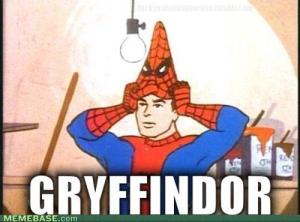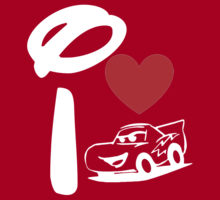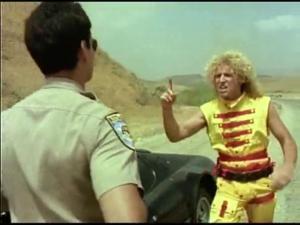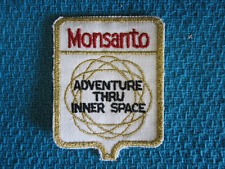 Singing into the wind. Bailing out the Titanic with a teacup. That is the sense of futility I feel when it comes to sharing something insightful that hasn’t already been said about The Wizarding World of Harry Potter at Universal’s Islands of Adventure. The entire production is an unqualified success from the Butterbeer to Bertie Bott’s Every-Flavour Beans; from the Forbidden Journey to Filch’s Emporium. It’s a feast for the senses worthy of the Great Hall at Hogwarts, and cannot fail to delight even the most studious and persnickety of fans.
Singing into the wind. Bailing out the Titanic with a teacup. That is the sense of futility I feel when it comes to sharing something insightful that hasn’t already been said about The Wizarding World of Harry Potter at Universal’s Islands of Adventure. The entire production is an unqualified success from the Butterbeer to Bertie Bott’s Every-Flavour Beans; from the Forbidden Journey to Filch’s Emporium. It’s a feast for the senses worthy of the Great Hall at Hogwarts, and cannot fail to delight even the most studious and persnickety of fans.
 As much as I gaped, marveled, delighted, and thrilled at everything I was experiencing, there was one detail, which I keep coming back to that crystallizes the strong sensibilities at work here. After having made my way through Hogsmeade a few times, I kept noticing a building with a modest line outside of it. I’m sure with a bit of investigation, or perusing the park map, or asking a cast member, I could have figured out what it was, but I did none of these things, and decided to just allow myself to be surprised. About every ten minutes or so, the doors to the adjoining building would open, about 30 guests would be allowed in, and the doors would close again. Curiosity piqued.
As much as I gaped, marveled, delighted, and thrilled at everything I was experiencing, there was one detail, which I keep coming back to that crystallizes the strong sensibilities at work here. After having made my way through Hogsmeade a few times, I kept noticing a building with a modest line outside of it. I’m sure with a bit of investigation, or perusing the park map, or asking a cast member, I could have figured out what it was, but I did none of these things, and decided to just allow myself to be surprised. About every ten minutes or so, the doors to the adjoining building would open, about 30 guests would be allowed in, and the doors would close again. Curiosity piqued.
When it was my turn to enter, I found myself in a dark room with walls lined from floor to very tall ceilings with shelves crammed with narrow, rectangular boxes. As I soon discovered, I was in Ollivander’s Wand Shop. A young guest was selected, and the rest of the audience was entertained with ten minutes of immersive theatre. The guest is placed into the position of a young wizard choosing a wand (or being chosen by a wand) and experiencing the necessary trial and error that ensues during the selection process. As we observe, wand/wizard mismatches can have chaotic consequences, and the show is punctuated by tasteful special effects that occur throughout the room. Before long, wand and wizard are well-met, and the guests are ushered into the “real” Ollivander’s where they sell real items in exchange for real money.
 So why is it that in a land that features one of the most technologically sophisticated attractions on the planet, an exquisitely themed restaurant complete with a bar that sells real alcohol, and an infinity of detailed exteriors and interiors, I was so taken by this bit at Ollivander’s? The answer is simple. The decision to showcase this particular component of the Harry Potter mythology demonstrates a true respect and understanding for the material and why it resonates with our culture.
So why is it that in a land that features one of the most technologically sophisticated attractions on the planet, an exquisitely themed restaurant complete with a bar that sells real alcohol, and an infinity of detailed exteriors and interiors, I was so taken by this bit at Ollivander’s? The answer is simple. The decision to showcase this particular component of the Harry Potter mythology demonstrates a true respect and understanding for the material and why it resonates with our culture.
Imagine the blank sheet of paper. Now imagine the task of selecting from among the thousands of pages and dozens of hours that comprise the seven, often massive, volumes and eight epic films of the Harry Potter series. At the very least, it’s an awesome undertaking to distill that into a handful of experiences to unify in a themed environment. However, at the heart of all those pages and frames and at the soul of that phenomenon is the universe of answers suggested by a simple articulation and the question it raises, “The world is a magical place, but what if I could learn to control it?” It’s no accident that Harry Potter takes place in modern-day England and not on another planet, or in the distant past, or a parallel universe. The allure of Harry Potter is the not-so-childlike hope that maybe this could be real. As we live vicariously through the young heroes (and villains) of the story, their entry point into this world that we desire is Ollivander’s. More so than Platform 9 3/4, Ollivander’s is where desire meets destiny, and the realization of one’s dream becomes personal. Selecting this vignette shows tremendous insight and sensitivity to what really matters in this epic story.
 However, the execution is equally stunning. It’s a very low-profile attraction, and it’s easy to miss. You can easily enter the real store through an alternate entrance and be none the wiser of what’s happening in the adjoining room. This deliberate understatement in an environment of overload is a very tasteful design decision, and makes the experience feel even more special. Granted, it is somewhat of a holy grail to deliver guests a personalized, intimate experience in theme parks, but the sheer numbers of guests often make this an impractical goal, and tends to be at odds with another hallmark of theme park design: consistency. This makes the choice to use the modality of immersive theatre even more daring. Attractions have been breaking the 4th wall for generations as a technique to kickstart an immersive experience. From the Ghost Host and the talking skull to Indy and Evac, we have been personally invited to enter the story instead of just watch from afar. However, beloved as those characters are, they’re still a step removed from us, no matter how amazing the technology gets. Quite literally bringing Ollivander’s to life creates an impact that is not soon forgotten even if you are not the chosen one (and chances are, at my age, it’s gonna have to be a pretty slow day.)
However, the execution is equally stunning. It’s a very low-profile attraction, and it’s easy to miss. You can easily enter the real store through an alternate entrance and be none the wiser of what’s happening in the adjoining room. This deliberate understatement in an environment of overload is a very tasteful design decision, and makes the experience feel even more special. Granted, it is somewhat of a holy grail to deliver guests a personalized, intimate experience in theme parks, but the sheer numbers of guests often make this an impractical goal, and tends to be at odds with another hallmark of theme park design: consistency. This makes the choice to use the modality of immersive theatre even more daring. Attractions have been breaking the 4th wall for generations as a technique to kickstart an immersive experience. From the Ghost Host and the talking skull to Indy and Evac, we have been personally invited to enter the story instead of just watch from afar. However, beloved as those characters are, they’re still a step removed from us, no matter how amazing the technology gets. Quite literally bringing Ollivander’s to life creates an impact that is not soon forgotten even if you are not the chosen one (and chances are, at my age, it’s gonna have to be a pretty slow day.)
I don’t mean to suggest that the techniques used at Ollivander’s are unique in the theme park world. The hundreds of cast members at any major park provide a unique and constant presence in myriad interactions that is easily taken for granted, but in fact lies at the core of seamless immersive experiences. However, there is nevertheless a harmony of theme, execution, and restraint at Ollivander’s that is uniquely transcendent, noteworthy, and inspiring. Pure magic.
Follow @thememelab I’m just going to come right out and say it. I’m really just not into cars that much. Sure, I went through my pre-adolescent fixations with Hot Wheels and
I’m just going to come right out and say it. I’m really just not into cars that much. Sure, I went through my pre-adolescent fixations with Hot Wheels and 




